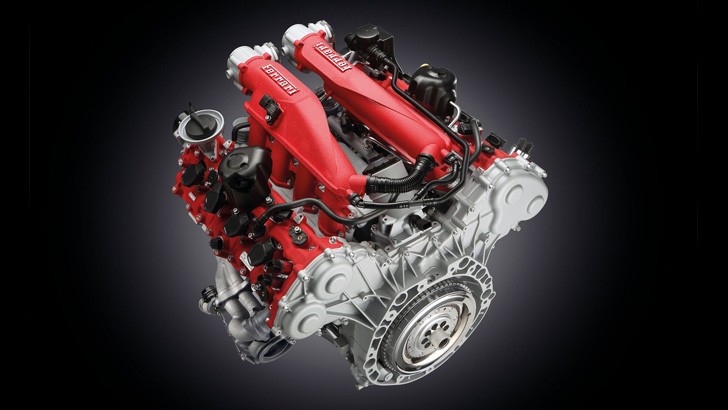Like any other automaker, Ferrari is facing the challenge of creating cleaner vehicles, but it must do so without tarnishing its history of producing some of the best-performing vehicles on the planet.
According to a report in Automotive News, Ferrari plans a 20-percent reduction of carbon dioxide emissions across its fleet by 2021 by expanding the use of turbocharged engines and gasoline-electric hybrid powertrains.
Ferrari recently added a turbocharger to the Ferrari California T, which saw a drop in CO2 emissions as well as a significant increase in horsepower when it replaced the 4.3-liter naturally aspirated V-8 with a 3.9-liter turbocharged V-8.
Ferrari Powertrain Director Vittorio Dini told Automotive News “in the future, all of our V-8s will use turbos,” and following the trend from the California T, Dini added that Ferrari is looking to design V-8s with even smaller displacements that are able to produce even more power. Currently, the only other Ferrari to use a V-8 is the 458 Italia, and there was a recent report that this model could go turbocharged as well.
The bigger challenge will be making the V-12 engines run cleaner, and for that, Ferrari plans to use some of the lessons it has learned from the LaFerrari hybrid hypercar. For optimal output and emissions reduction, turbocharging the V-12 engines would require four turbos, which would take up too much space and generate too much heat, so on future models using a V-12 engine, Ferrari is looking to use some sort of hybrid system. Like the California T, the LaFerrari is both cleaner and more powerful than its predecessor, the Ferrari Enzo.
These examples alone have helped Ferrari reduce its fleet emissions by about 40 percent since 2007 when CO2 emissions were 435 g/km, but apparently there is still room for improvement.
"Our average CO2 emissions are currently about 270 grams of CO2 per kilometer. We want to use all the available technologies to reduce emissions by 3 percent each year, which means approximately a 20 percent decrease by 2021," Dini said.
Ferrari Powertrain Director Vittorio Dini told Automotive News “in the future, all of our V-8s will use turbos,” and following the trend from the California T, Dini added that Ferrari is looking to design V-8s with even smaller displacements that are able to produce even more power. Currently, the only other Ferrari to use a V-8 is the 458 Italia, and there was a recent report that this model could go turbocharged as well.
The bigger challenge will be making the V-12 engines run cleaner, and for that, Ferrari plans to use some of the lessons it has learned from the LaFerrari hybrid hypercar. For optimal output and emissions reduction, turbocharging the V-12 engines would require four turbos, which would take up too much space and generate too much heat, so on future models using a V-12 engine, Ferrari is looking to use some sort of hybrid system. Like the California T, the LaFerrari is both cleaner and more powerful than its predecessor, the Ferrari Enzo.
These examples alone have helped Ferrari reduce its fleet emissions by about 40 percent since 2007 when CO2 emissions were 435 g/km, but apparently there is still room for improvement.
"Our average CO2 emissions are currently about 270 grams of CO2 per kilometer. We want to use all the available technologies to reduce emissions by 3 percent each year, which means approximately a 20 percent decrease by 2021," Dini said.
